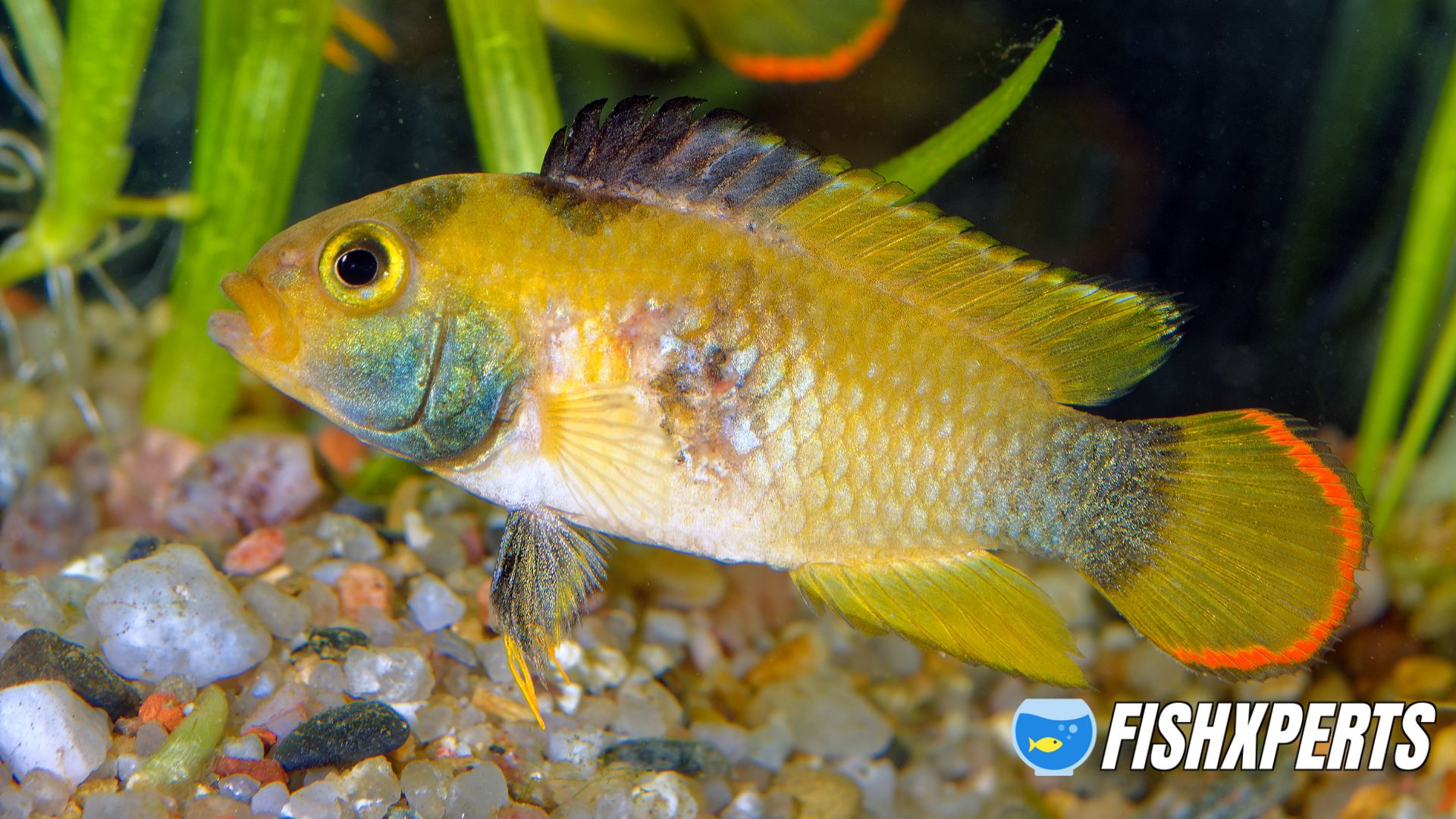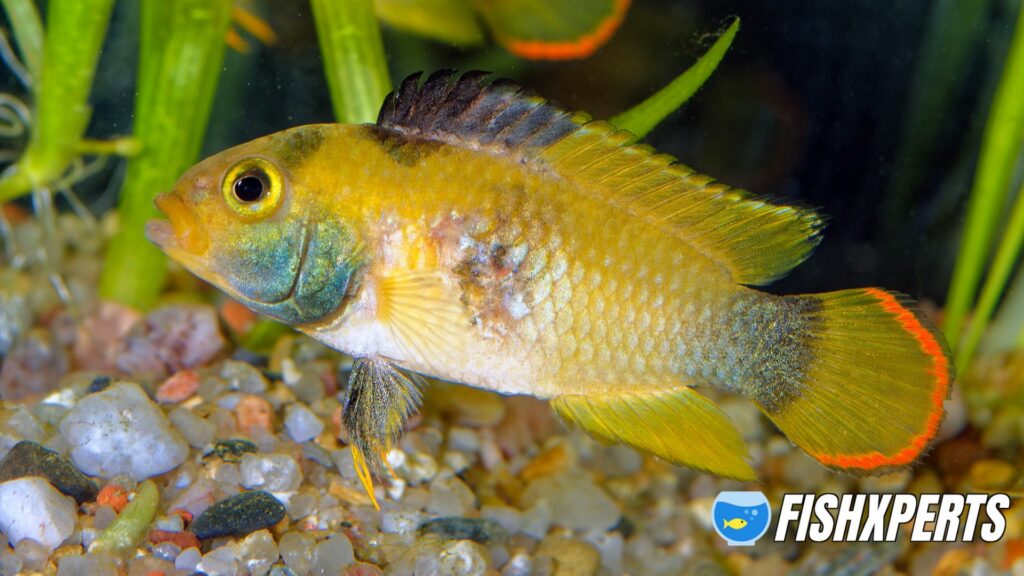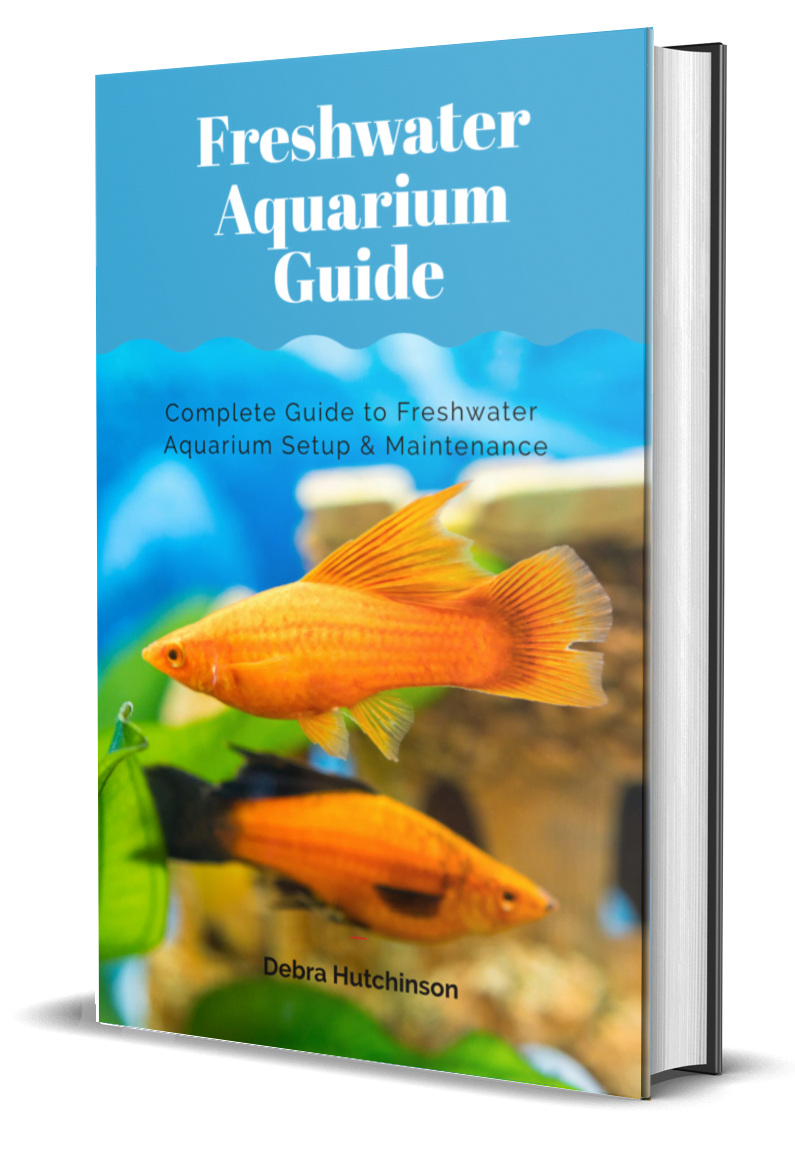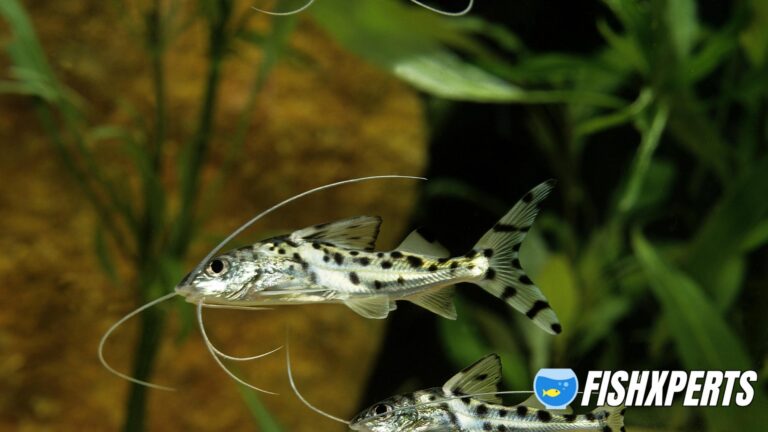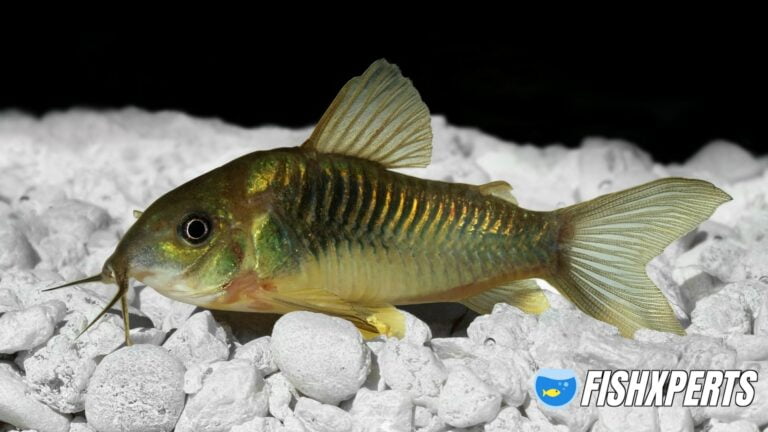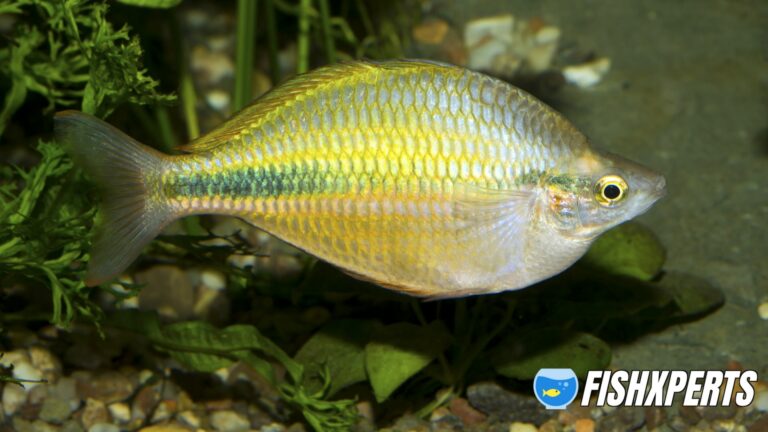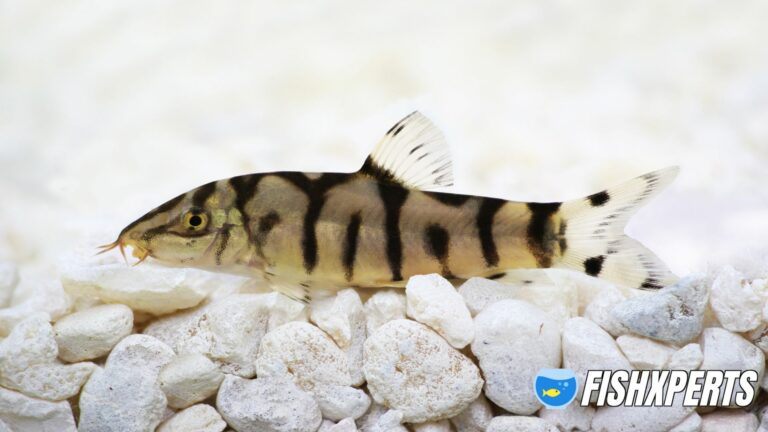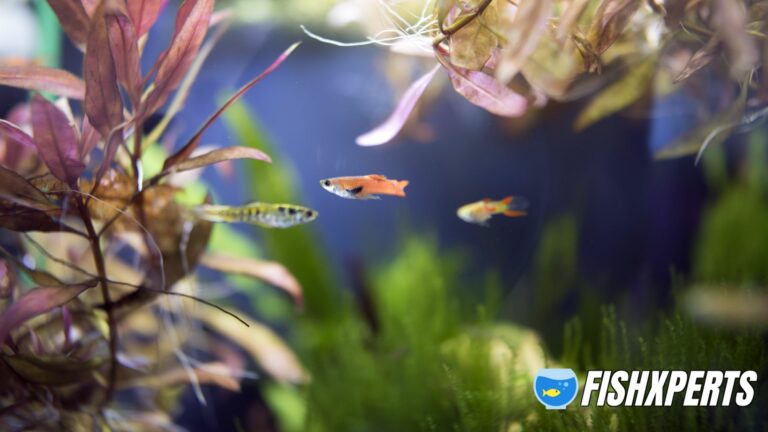Apistogramma Care
Overview
Apistogramma is a genus of freshwater cichlid fishes native to South America. The genus contains about 100 species, many of which are popular in the aquarium trade. Apistogramma species are small to medium-sized cichlids, typically measuring 4-5 cm (1.6-2.0 in) in length. They are characterized by their bright colors and elongated fins.
Many Apistogramma species are found in the Amazon Basin, with others occurring in rivers and lakes in Peru, Bolivia, Brazil, Colombia, and Ecuador. Apistogramma cichlids are typically found in slow-moving waters, such as ponds, streams, and rivers. The majority of species are found in blackwater habitats, which are characterized by dark-colored water due to the high level of dissolved organic matter.
Apistogramma cichlids are omnivorous, feeding on a variety of small invertebrates and plant matter. Breeding is typically triggered by the onset of the rainy season, and males will construct nests out of plant material in which the eggs are deposited. Females will guard the eggs and fry (newly hatched fish) until they are large enough to fend for themselves.
A number of Apistogramma species are popular among aquarium hobbyists, due to their bright colors, small size, and peaceful nature. The most popular species include Apistogramma cacatuoides, Apistogramma agassizii, and Apistogramma Borelli.
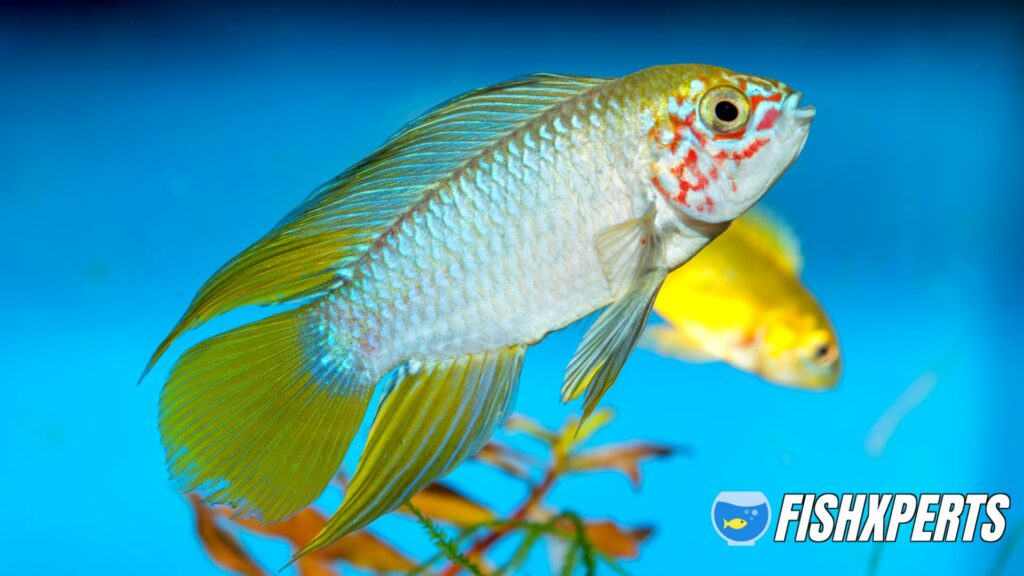
Apistogramma Care Tips In Brief
- Aristogramma are small fish, typically around 2-3 inches in length. They are brightly colored, and many species are sexually dimorphic.
- Aristogramma are popular aquarium fish. They are relatively easy to care for, and make good community fish. They are omnivorous, and will accept most sinking pellets and flakes. It is important to provide hiding places and cover in the aquarium, as Aristogramma are shy fish. Live plants are a good option.
- Aristogramma are also popular breeding fish. They are mouthbrooders, and the female will incubate the eggs and fry in her mouth for up to three weeks. After fry are released, they should be fed small live foods.
Lifespan
The typical lifespan of an Apistogramma is between 3 and 5 years, though some species have been known to live up to 10 years in captivity. In the wild, the lifespan is likely shorter due to predation and other environmental factors.
Appearance
Apistogramma are small cichlids, typically ranging from 2.5-5.0 cm (0.98-1.97 in) in standard length. Most species are sexually dimorphic, with the males being more colorful than the females. The fins of males are also often longer and more elaborate than those of females.
The body shape of Apistogramma is laterally compressed, with a convex forehead and a pointed snout. The mouth is small and subterminal, with the lower jaw being slightly longer than the upper. The teeth are conical and arranged in a single row in both jaws. The body is covered in cycloid scales, which are arranged in 7-9 longitudinal rows.
Most Apistogramma species are sexually dimorphic, with the males being more brightly colored than the females. The fins of males are also often longer and more elaborate than those of females. The color patterns of Apistogramma are variable, but many species show some degree of sexual dichromatism.
Males of many Apistogramma species exhibit extended fins, which are used to attract females and intimidate rivals. The fins of males are often brightly colored, and may be decorated with spots, stripes, or other patterns.
The majority of Apistogramma species are found in the Amazon Basin, but they are also present in other river basins in South America.
Average Size
The average size of an Apistogramma is between 2 and 3 inches (5 to 8 cm). The largest recorded Apistogramma was 4 inches (10 cm) long. Apistogramma generally live for 2 to 4 years in captivity, with some specimens living up to 10 years.
Apistogramma are one of the smaller cichlid species. They are not a very active fish, and prefer to stay close to the bottom of the tank. They are not a good choice for a community tank, as they can be aggressive towards other fish, and will not do well with tankmates that are much larger than them.
Different Types Of Apistogramma
Apistogramma is a genus of freshwater fish in the family Cichlidae. The genus comprises more than 100 species, making it one of the largest genera of cichlids.
Apistogramma species are small to medium-sized cichlids, typically ranging from 2.5 to 10 cm (1 to 4 in) in length. They are characterized by their elongated bodies and brightly colored fins. The majority of species are sexually dimorphic, meaning that males and females exhibit different colors and patterns.
The majority of Apistogramma species are found in slow-moving waters, such as rivers, streams, and ponds. Some species, however, inhabit more fast-moving waters, such as rivers and creeks.
Apistogramma species are typically aquarium fish, and are popular among fishkeepers due to their bright colors and relatively peaceful nature. They are relatively easy to care for, but do require some special considerations, such as the need for hiding places and a diet rich in live foods.
There are a number of different types of Apistogramma, which can be broadly divided into two groups: the short-finned species and the long-finned species.
Short-finned species include:
- Apistogramma agassizii
- Apistogramma alacrina
- Apistogramma borellii
- Apistogramma cacatuoides
- Apistogramma trifasciata
Long-finned species include:
- Apistogramma eunotus
- Apistogramma nijsseni
- Apistogramma viejita
Tank Size & Setup
The size of the tank is important for a number of reasons. The main reason is that the fish need enough room to swim and be active. They also need room to hide and feel secure. A small tank will not provide enough space for the fish to be comfortable and could lead to stress and health problems.
The other reason the size of the tank is important is because of the water quality. A small tank is more likely to have water quality issues because the water gets dirty faster. A larger tank has more water to dilute the waste and ammonia produced by the fish.
When setting up an Apistogramma tank, it is important to choose the right size. A 20 gallon tank is a good size for a small group of fish. If you want to keep a larger group of fish, a 30 gallon tank is a better choice.
It is also important to have the correct filtration for the tank. The filter should be able to handle the size of the tank and the number of fish. A good rule of thumb is to choose a filter that is rated for a tank that is twice the size of the tank you have.
The Apistogramma are a peaceful fish but they do need hiding places. They like to hide among plants and in caves. It is a good idea to have some live plants in the tank and to provide some caves or hiding places for the fish.
Choose a tank size that will provide enough room for the fish to be comfortable and that will allow for good water quality. Be sure to include some hiding places for the fish. With the right setup, an Apistogramma tank can be a beautiful and peaceful addition to your home.
Water Parameters
Aquarium water parameters are measurements that aquarists use to gauge the quality of their water. The most important water parameters for keeping Apistogramma cichlids are pH, hardness, and temperature.
pH
pH is a measure of the acidity or alkalinity of water. Apistogramma cichlids prefer water with a pH between 6.5 and 7.5.
Hardness
Hardness is a measure of the dissolved minerals in water. Apistogramma cichlids prefer water that is soft to medium hardness.
Temperature
Apistogramma cichlids prefer water that is warm, with a temperature between 75 and 82 degrees Fahrenheit.
Decorations and plants
Decorations and plants are an important part of setting up an Apistogramma tank. live plants help to create a natural environment for the fish and can also provide hiding places and spawning sites. Driftwood, rocks, and other decorations can also be used to create a natural-looking habitat.
Lighting
Lighting is an important aspect of any Apistogramma tank setup. The right lighting can help bring out the colors of your fish and make the tank more visually appealing. It can also help promote the growth of plants and algae in the tank.
There are a few things to keep in mind when choosing lighting for your Apistogramma tank. The first is the intensity of the light. Apistogramma are a tropical fish and prefer a tank with a water temperature between 75-80 degrees Fahrenheit. This means that they will do best in a tank with bright lighting.
The second thing to consider is the type of lighting you use. There are a variety of different types of aquarium lights available on the market. The most common type of light used in aquariums is fluorescent lighting. Fluorescent lights come in a variety of colors, but the most popular color for aquariums is white.
If you are looking for a more natural look for your Apistogramma tank, you can also use LED lighting. LED lights are available in a variety of colors, but they are most commonly used in white or blue.
Finally, you will need to consider the placement of your lighting. The placement of your lights will depend on the size and shape of your tank. It is important to place your lights so that they evenly illuminate the entire tank.
When setting up your Apistogramma tank, be sure to keep these lighting tips in mind to create a beautiful and healthy environment for your fish.
Filtration
Filtration is an important part of any aquarium setup, and Apistogramma tanks are no different. There are a few different types of filtration that can be used in an Apistogramma tank, and the best type of filtration for your setup will depend on the fish you are keeping and the size of your tank.
The most common type of filtration used in Apistogramma tanks is canister filtration. Canister filters are great for Apistogramma tanks because they are very efficient at removing waste and debris from the water. Canister filters can be placed under the aquarium or can be hung on the back of the aquarium.
Another type of filtration that can be used in Apistogramma tanks is power filters. Power filters are not as efficient as canister filters at removing waste and debris from the water, but they are much easier to maintain and can be less expensive.
The last type of filtration that can be used in Apistogramma tanks is wet/dry filters. Wet/dry filters are very efficient at removing waste and debris from the water, but they can be more expensive and difficult to maintain.
No matter what type of filtration you choose for your Apistogramma tank, it is important to keep the filter clean and maintain it according to the manufacturer’s instructions. A dirty filter can lead to water quality problems and can cause your fish to become sick.
Common Potential Diseases
As with any fish, there are a number of potential diseases that can affect Apistogramma. Some of the more common potential diseases include:
* Black spot disease – Black spot disease is a relatively common affliction of Apistogramma, and is caused by a parasitic infection. Black spot disease is characterized by black spots on the body and fins of the fish, and can eventually lead to death if left untreated.
* Whitespot disease – Whitespot disease is another common parasitic infection that can affect Apistogramma. Whitespot disease is characterized by white spots on the body and fins of the fish, and can also eventually lead to death if left untreated.
* Finrot – Finrot is a bacterial infection that can affect the fins of Apistogramma. Finrot is characterized by red or white lesions on the fins, and can eventually lead to the death of the fish if left untreated.
* Mouthrot – Mouthrot is a bacterial infection that affects the mouth and gills of Apistogramma. Mouthrot is characterized by red or white lesions on the mouth and gills, and can eventually lead to the death of the fish if left untreated.
If you suspect that your Apistogramma is suffering from any of these diseases, it is important to seek professional veterinary care as soon as possible. Early diagnosis and treatment is often the key to a successful recovery.
Food & Diet
A healthy diet for Apistogramma cichlids includes both live and frozen foods. Live foods such as brine shrimp, daphnia, and bloodworms should be offered regularly. Frozen foods such as krill, mysis shrimp, and glass worms can also be offered, and are often appreciated by Apistogramma cichlids.
It is also important to offer a variety of foods to ensure that the Apistogramma cichlids are getting all the nutrients they need. A good diet for Apistogramma cichlids should also include some plant matter. Spirulina and other algae-based foods are a good source of plant matter for Apistogramma cichlids.
In general, Apistogramma cichlids should be fed small meals multiple times per day. It is also important to not overfeed, as this can lead to health problems in Apistogramma cichlids.
Behavior & Temperament
The typical behavior of an apistogramma is to be a peaceful, shy fish that likes to hide among the plants in their aquarium. They are not generally aggressive fish, but they may become territorial with other fish if they feel their space is being invaded. They are also known to be good parents, with the female apistogramma caring for the eggs and fry after they are born.
When it comes to their temperament, apistogramma are generally peaceful fish. However, they can become territorial with other fish if they feel their space is being invaded. They are also known to be good parents, with the female apistogramma caring for the eggs and fry after they are born.
Tank Mates
A common question asked by new Apistogramma owners is “What are good tank mates for my Apistogramma?”. The answer to this question is not as simple as it may first appear. The reason being, Apistogramma are a very diverse genus of fish, with many different species and subspecies. As such, there is no one-size-fits-all answer to this question.
When choosing tank mates for your Apistogramma, it is important to consider the size, temperament, and diet of the fish you are considering. It is also important to research the specific needs of the species or subspecies of Apistogramma you are keeping.
Some good general tank mates for Apistogramma include other peaceful dwarf cichlids, danios, rasboras, and tetras. Some species of Apistogramma, such as A. borellii, are known to be particularly aggressive, and should only be kept with other fish that can hold their own in an aquarium.
When choosing Apistogramma tank mates, it is always best to err on the side of caution and choose fish that are peaceful and non-aggressive. By doing so, you will create a much more enjoyable and stress-free environment for all of your fish.
Breeding & Mating
Apistogramma breeding and mating is a fascinating process to watch and take part in, and can be very rewarding for the aquarist. Proper planning and preparation are essential for success.
There are a few things to keep in mind when planning to breed Apistogramma. First, it is important to choose a healthy and robust pair of fish. They should be of similar size and be free of any visible defects. Second, the aquarium should be set up specifically for breeding, with plenty of hiding places and soft, alkaline water. Finally, live food should be available for the fry once they are born.
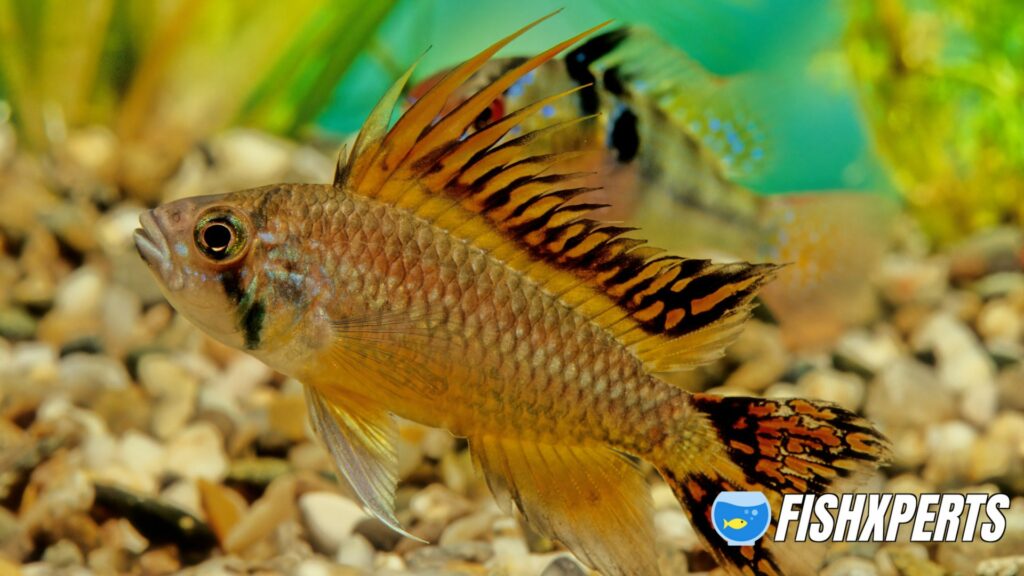
When the pair is ready to breed, the female will lay a small number of eggs in a hiding place. The male will then fertilize them. The fry will hatch a few days later and will be free-swimming a week or so after that. At this point, they will need live food to survive.
With proper care, Apistogramma fry can be successfully raised to adulthood. This process can be repeated many times, providing the aquarist with a never-ending supply of these beautiful fish.
FAQ
What fish can I put with Apistogramma?
There are a number of fish that can be kept with Apistogramma, but some care must be taken to ensure that the water parameters are appropriate and that the fish are of similar size. Good choices include other small cichlids such as Mikrogeophagus, as well as tetras and rasboras.
What temperature do Apistogramma like?
Apistogramma like a temperature in the range of 72 to 82 degrees Fahrenheit.
How many Apistogramma should be kept together?
Apistogramma prefer a temperature range of 75-82 degrees Fahrenheit.
Does Apistogramma need sand?
Apistogramma cichlids are a peaceful, yet feisty, freshwater fish that make great additions to many aquariums. They are small in size and come in a wide variety of colors and patterns. Apistogramma cichlids originate from South America and are found in slow-moving rivers and streams with sandy bottoms. In their natural habitat, these fish dig pits in the sand to lay their eggs in.
While Apistogramma cichlids can certainly live in an aquarium without sand, they will be much happier and thrive better if their tank has a sandy substrate. A sand substrate allows these fish to dig and build pits, which they use for spawning and as refuge from other fish. In addition, the sand helps to buffer the water and keep it at a more stable pH.
Do Apistogramma need caves?
No, apistogramma do not need caves. They are a peaceful fish that can live in a community tank. They do, however, like to hide and will often seek out caves or other hiding places. So, while they don’t need caves, they may appreciate having them available.
How often should you feed Apistogramma?
As with most fish, it is best to feed Apistogramma small meals several times a day rather than one large meal. How often you feed them will depend on their age, size, and activity level. Young fish and fish that are actively breeding should be fed more often than older fish or fish that are not breeding.
Does Apistogramma eat shrimp?
Apistogramma are known to be opportunistic feeders and will consume a variety of food items including shrimp. In the wild, their diet consists of small insects, crustaceans, and other invertebrates. In the aquarium, they can be fed a variety of foods including live, frozen, or freeze-dried foods.
Can Apistogramma be kept alone?
Yes, Apistogramma can be kept alone, but they are much happier when kept in pairs or small groups. They are very social fish and enjoy the company of their own kind.
What is the most peaceful Apistogramma?
The most peaceful Apistogramma is the Apistogramma borellii. This fish is a gentle and timid fish that is native to the Amazon River basin. This fish is a great addition to any peaceful community aquarium.
Can Apistogramma be kept in a community tank?
Yes, Apistogramma can be kept in a community tank as long as the tank is large enough and the other fish in the tank are not too aggressive. Apistogramma are peaceful fish that do well in a community tank setting.
Can Apistogramma be kept in a 10 gallon tank?
Yes, Apistogramma can be kept in a 10 gallon tank. In fact, they are often kept in much smaller tanks. The important thing is to provide them with plenty of hiding places and places to explore.
Do Apistogramma get along with corydoras?
It is generally not recommended to keep Apistogramma cichlids with corydoras catfish, as the two species have different water quality requirements and can often be aggressive towards one another. However, if you have a large enough tank and the fish are properly acclimated, they can usually coexist peacefully.
How big do Apistogramma get?
The vast majority of Apistogramma species stay fairly small, with most maxing out at around 2.5” (6 cm) in length. However, there are a few species that can get a bit larger, with some reaching up to 4” (10 cm) in length.
How often do Apistogrammas breed?
Apistogrammas typically breed every four to six weeks.
Final Thoughts
If you’re looking for a beautiful, brightly-colored fish to add to your aquarium, you may be considering an apistogramma. While these fish are certainly eye-catching, there are a few things you should know before you decide to keep them.
First of all, apistogramma are cichlids, which means they can be aggressive towards other fish. If you’re keeping them in a community tank, you’ll need to make sure there are plenty of hiding places for the other fish to retreat to.
Secondly, apistogramma are territorial. They will establish a territory within the aquarium and will defend it aggressively. This means that you’ll need to provide them with plenty of space to spread out.
Finally, apistogramma are sensitive to water quality. They prefer soft, acidic water, so you’ll need to be vigilant about keeping the water clean and maintaining the correct pH level.
If you’re prepared to provide the proper care for an apistogramma, then they can make a beautiful and interesting addition to your aquarium.
Topics Covered

